Activities
There were annual meetings, frequently in Paris, but also in Delft, Turin, Cambridge, Washington DC. [2] : 45–70 The Advisory Group administered a consultant and exchange program including lecture series and technical panels.
The AGARD publishing program included a multilingual aeronautical dictionary, about ninety titles per year, with a normal run of 1200. An Agardograph is a work prepared by, or on behalf of, AGARD's panels. [2] : 217 For example, an agardograph on the AGARD-B wind tunnel model was prepared. [4]
Later examples of AGARD studies include such topics as non-lethal weapons, theatre ballistic missile defence, protection of large aircraft in peace support operations, and limiting collateral damage caused by air-delivered weapons. AGARD was also one of the first NATO organizations to cooperate with Russia in a mutual exchange of information dealing with flight safety.
AGARD merged with the NATO Defence Research Group (DRG) in 1996 to become the NATO Research and Technology Organisation (RTO). [5]

Aeroelasticity is the branch of physics and engineering studying the interactions between the inertial, elastic, and aerodynamic forces occurring while an elastic body is exposed to a fluid flow. The study of aeroelasticity may be broadly classified into two fields: static aeroelasticity dealing with the static or steady state response of an elastic body to a fluid flow, and dynamic aeroelasticity dealing with the body's dynamic response.
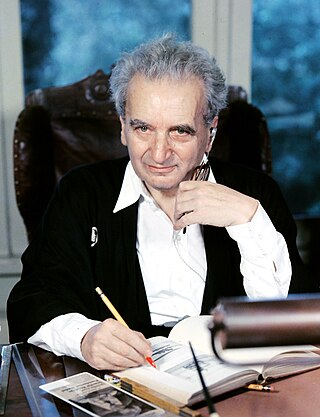
Theodore von Kármán, was a Hungarian-American mathematician, aerospace engineer, and physicist who worked in aeronautics and astronautics. He was responsible for crucial advances in aerodynamics characterizing supersonic and hypersonic airflow. The human-defined threshold of outer space is named the "Kármán line" in recognition of his work. Kármán is regarded as an outstanding aerodynamic theoretician of the 20th century.

In fluid dynamics, angle of attack is the angle between a reference line on a body and the vector representing the relative motion between the body and the fluid through which it is moving. Angle of attack is the angle between the body's reference line and the oncoming flow. This article focuses on the most common application, the angle of attack of a wing or airfoil moving through air.

Norman (Norm) Ralph Augustine is a U.S. aerospace businessman who served as United States Under Secretary of the Army from 1975 to 1977. Augustine served as chairman and CEO of the Lockheed Martin Corporation. He was chairman of the Review of United States Human Space Flight Plans Committee.
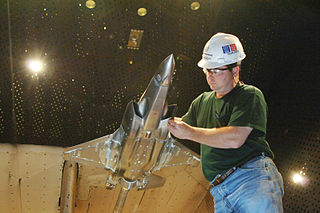
The Arnold Engineering Development Complex (AEDC), Arnold Engineering Development Center before July 2012, is an Air Force Materiel Command facility under the control of the Air Force Test Center (AFTC). Headquartered at Arnold Air Force Base, Tennessee, the Complex also operates from geographically separated units at Ames Research Center, Mountain View and Edwards AFB, California; Peterson AFB, Colorado; Eglin AFB, Florida; the Federal Research Center at White Oak, Maryland; Holloman AFB, Kirtland AFB, and White Sands Missile Range, New Mexico; Wright-Patterson AFB, Ohio, and Hill AFB, Utah. AEDC operates more than 68 test facilities, including, but not limited to, aerodynamic and propulsion wind tunnels, rocket and turbine engine test cells, environmental chambers, arc heaters, ballistic ranges, sled tracks, centrifuges, and other specialized test units.
The Defence Science and Technology Group (DSTG) is part of the Australian Department of Defence which provides science and technology support to safeguard Australia and its national interests. The agency's name was changed from Defence Science and Technology Organisation (DSTO) on 1 July 2015. It is Australia's second largest government-funded science organisation after the CSIRO and its research outcomes have supported operations for over 100 years.

Robert C. Michelson is an American engineer and academic widely known for inventing the entomopter, a biologically inspired flapping-winged aerial robot, and for having established the International Aerial Robotics Competition. He has received degrees in electrical engineering from the Virginia Polytechnic Institute and the Georgia Institute of Technology. Michelson's professional career began at the U.S. Naval Research Laboratory where he worked on radar-based ocean surveillance systems. He later became a member of the research faculty at the Georgia Institute of Technology. At the Georgia Tech Research Institute (GTRI) he was involved in full-time research, directing over 30 major research programs.
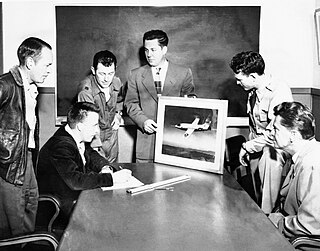
Colonel Jackie Lynwood Ridley was an aeronautical engineer, USAF test pilot and chief of the U.S. Air Force's Flight Test Engineering Laboratory. He helped develop and test many Cold War era military aircraft. He worked on the Bell X-1, the first aircraft to achieve supersonic flight, and was highly respected among fellow test pilots, most notably Chuck Yeager, for his engineering skills.

The Guggenheim Aeronautical Laboratory at the California Institute of Technology (GALCIT), was a research institute created in 1926, at first specializing in aeronautics research. In 1930, Hungarian scientist Theodore von Kármán accepted the directorship of the lab and emigrated to the United States. Under his leadership, work on rockets began there in 1936. GALCIT was the first—and from 1936 to 1940 the only—university-based rocket research center. Based on GALCIT's JATO project at the time, the Jet Propulsion Laboratory was established under a contract with the United States Army in November 1943.
Boris Laschka is a German fluid dynamics scientist and aeronautical engineer known for his work in unsteady aerodynamics, in applied aerodynamics, in aeroelasticity, and by his participation in the development of several experimental, civil, and military airplanes, e.g. VTOL VJ 101, Airbus A300 and A310, CN 235 and N 250 (Indonesia) and Tornado aircraft.
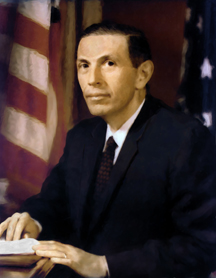
Alexander Henry Flax was the Chief Scientist of the U.S. Air Force (USAF) from 1959 to 1961, Assistant Secretary of the Air Force for Research and Development from 1963 to 1969, and the third Director of the National Reconnaissance Office (NRO) from 1965 to 1969. He was the director at a time when the second generation of imaging systems became operational and began to play a major role in United States intelligence during the Cold War. He oversaw major growth in NRO funding and personnel, the development of signals intelligence collectors from space, and the development of electro-optical imaging for US reconnaissance satellites.

Michael Ihor Yarymovych is President of Sarasota Space Associates, an aerospace consultant providing services to the aerospace industry and government. He is Senior Fellow of the United States Air Force Scientific Advisory Board (SAB) and has served on numerous SAB and Defense Science Board studies. He retired from the Boeing Company in 1998 as Vice President of International Technology in the Information, Space and Defense Systems organization. Prior to the merger of Rockwell International with Boeing he was Vice President and Associate Center Director of the Systems Development Center, which focused the corporation’s resources on new high technology advanced concepts requiring the skills of many divisions. He had joined Rockwell in 1977 as Vice President Engineering of the Aerospace Operations in leadership positions of programs such as the Space Shuttle, Global Positioning System and the B1B strategic aircraft.
William Rees Sears was an aeronautical engineer and educator who worked at Caltech, Northrop Aircraft, Cornell University, and the University of Arizona. He was an editor of the Journal of the Aeronautical Sciences from 1955 to 1963 and the founding Editor of the Annual Review of Fluid Mechanics in 1969.
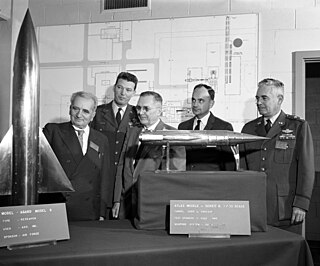
AGARD-B is a standard wind tunnel model that is used to verify, by comparison of test results with previously published data, the measurement chain in a wind tunnel. Together with its derivative AGARD-C it belongs to a family of AGARD standard wind tunnel models. Its origin dates to the year 1952, and the Second Meeting of the AGARD Wind Tunnel and Model Testing Panel in Rome, Italy, when it was decided to define two standard wind tunnel model configurations to be used for exchange of test data and comparison of test results of same models tested in different wind tunnels. The idea was to establish standards of comparison between wind tunnels and improve the validity of wind tunnel tests. Among the standard wind tunnel models, AGARD model configuration B (AGARD-B) has become by far the most popular. Initially intended for the supersonic wind tunnels, the AGARD-B configuration has since been tested in many wind tunnels at a wide range of Mach numbers, from low subsonic, through transonic to hypersonic. Therefore, a considerable database of test results is available.

This is a bibliography of works by Theodore von Kármán.
Kurt Heinrich Hohenemser was a German-born American aerospace engineer and pioneer in the field of helicopter design.
Frank Wattendorf was an American physicist specializing in wind tunnels for research in aerodynamics. Wattendorf is recalled for his report on the wind tunnel at Ötztal that was under construction in Austria during World War II. Wattendorf's report, and one by Theodore von Kármán, spurred on renewed research in aerodynamics.
Beverley J. McKeon is a physicist and aerospace engineer specializing in fluid dynamics, and in particular in turbulent flows near walls. She was Theodore von Kármán Professor of Aeronautics at the California Institute of Technology. Currently she is a professor in the Department of Mechanical Engineering at Stanford University.

The NATO Science and Technology Organization (STO) is the primary NATO organization for Defence Science and Technology. Its intent is to maintain NATO's scientific and technological advantage by generating, sharing and utilizing advanced scientific knowledge, technological developments and innovation to support the alliance's core tasks.












